Preserving the Amerindian Culture

“Monique Sarius is a native of Orealla and an advocate for the preservation of Indigenous culture. She believes that there can be innovative ways to improve certain processes in the making of indigenous food and craft while still staying true to tradition”
Sunday, September 24, 2023

I
Teaching is very rewarding for young educator from Kurukabaru Village to CPCE

IF anyone had told Miriam Williams that she would become a teacher, she would have doubted that while in high school.
Today, she is a Special Needs teacher and aspires to become a head teacher and an Education Officer.
After a motivational talk during a visit to her high school by Sherwyn Blackman, an Education Officer (Region Nine), she told herself she wanted to be just like him.
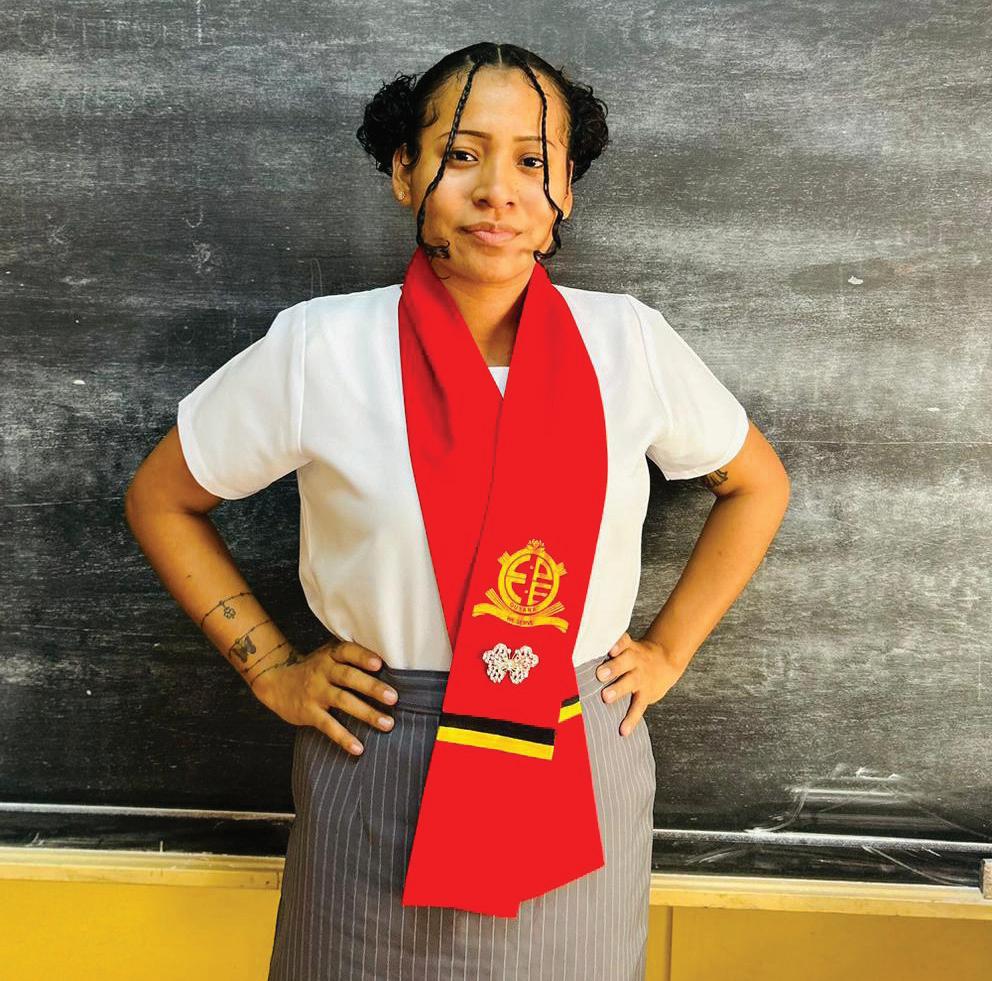
That one talk breathed vibrancy into her life in terms of academics and she was motivated enough to make good grades and complete her SBAs since she was way behind during that time.
Williams related that she was in the Science stream and was unsure what career path to take and she is very happy that Blackman visited the school and had that pep talk. He created a vision for her.
She followed that vision and became a teacher; she has now set high standards for herself as it relates to her career and would eventually like to become a head teacher and then an Education Officer, just like Blackman.

The 21-year-old told the Pepperpot Magazine that her aunt, Yolanda Williams, who played a mother role in her upbringing also played a role in her becoming a teacher as she is the deputy head teacher for F.E. Pollard Primary School.
Williams explained that at age two, she was transported to her aunt’s house in Cummings Lodge, where her mother was staying, having fallen ill from her home village of Kurukabaru, Region Eight (Potaro-Siparuni).
“My aunt was reluctant to let me go back to the village (home) after my mother recovered and promised her she would take care of me and she did just that,” she said.
The teacher reported that she grew up with her aunt after her mother left for Brazil, where her parents and six siblings are.
She is the only child of her parents who lives in Guyana and would visit her family occasionally.
Williams credits her success to her aunt, who always motivated her to strive for excellence, and today she is enrolled at Cyril Potter College of Education (CPCE) in Year One, in the Special Needs programme.
She is a teacher at St. Barnabas Special School on Regent Street, Georgetown and has been in the teaching profession for the past four years.
Williams is teaching Grade 7, which includes learners from 10 to 18 years old and beyond since they can stay until they are 21.
She added that most of the learners have special needs and they work with them no matter how long it takes and they have had some successes.
II CHRONICLE PEPPERPOT Sunday, September 24, 2023 SEE PAGE III
Young teacher, Miriam Williams
Guyanese Fashion Innovator Breaks Barriers with Prestigious Chevening Scholarship
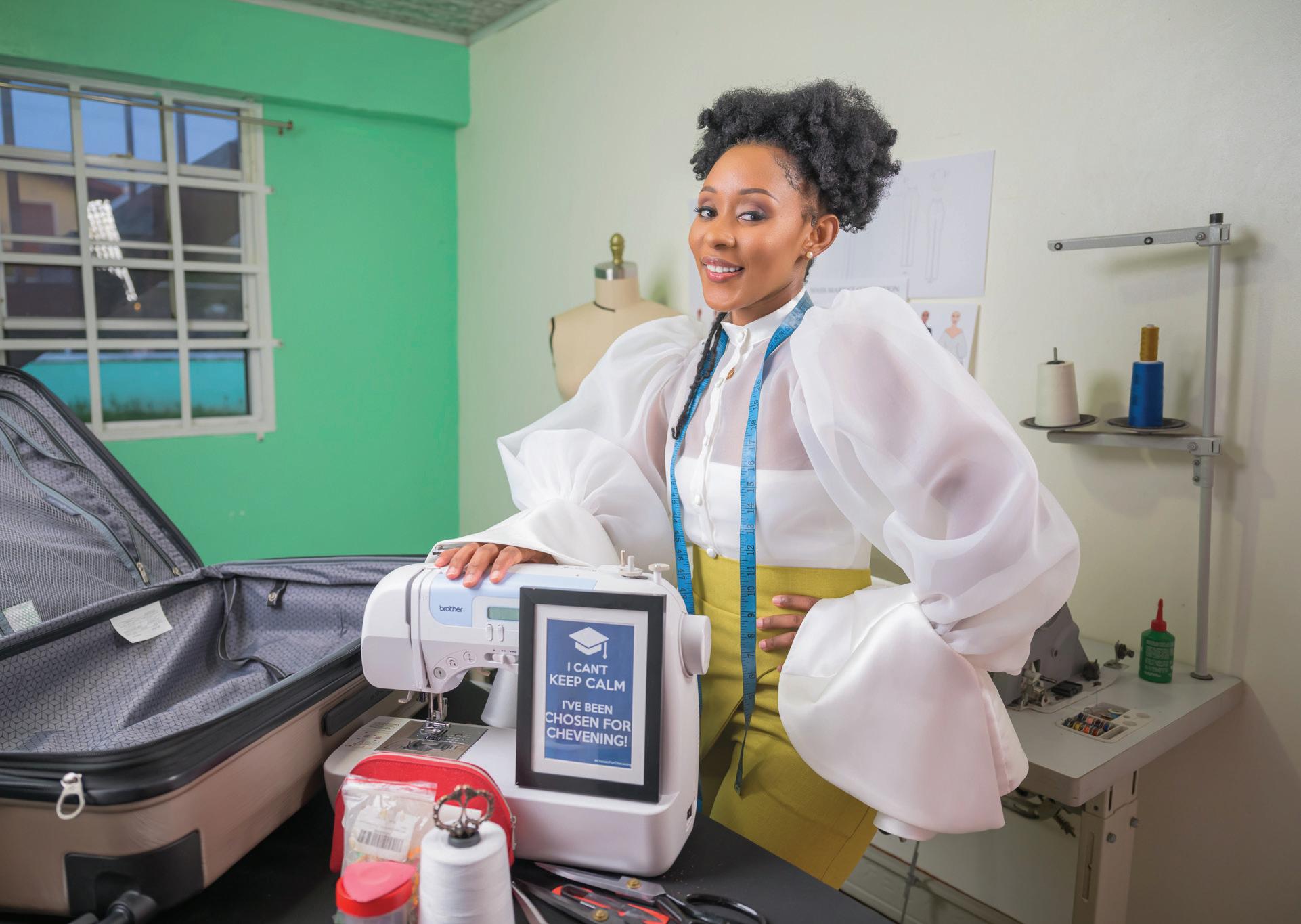
- First Guyanese to receive Chevening Scholarship to further studies in creative arts
IN the heart of Guyana, where tradition and modernity converge in a vibrant tapestry of culture and creativity,trailblazing fashion designer and founder of Shasha Designs, Keisha Edwards, has become a symbol of inspiration and hope for aspiring Guyanese creatives with her most recent achievement.

Keishais the first Guyanese creative professional to be awarded thecoveted Chevening Scholarship to further her studies in her field. This new semester, Keisha will pursuea Master’s Degree in Fashion Business Management from the University of Westminster in the United Kingdom.
In an interview with the Pepperpot Magazine, Keisha shared that the driving force behind applying for a Chevening Scholarship was crystal clear - growth and legacy. She recognised the inherent challenges in the Caribbean’s creative landscape, where the work of fashion designers often fades into obscurity
with time. Keisha elaborated on her motivation: “Legacy is extremely important to me. How do I position Shasha Designs as a brand that stands even after I am gone? How can I create change that is impactful and beneficial to the growth and development of the Guyanese fashion industry?” As such, her vision extends beyond her own success, encompassing the broader goal of revitalising the fashion scene in Guyana.
Keisha identifies a significant gap in her industry that she is determined to bridge: “The investment, support, innovation- the business of fashion is what is sorely lacking in our industry,” she said. To achieve this ambitious mission, she recognised the need for a deeper understanding of business management and the ability to scale her enterprise. With the United Kingdom being home to some of the world’s finest fashion schools and a thriving fashion capital, it was the ideal destination for her pursuit of knowledge and
skills.
“Chevening for me was that scholarship that was fully funded, allowed the amazing UK experience, focused on developing the skills of emerging leaders who were doing impactful work in their society, had a large network of alumni that fosters networking, collaborations, mentorship, and would allow me the opportunity to grow and develop both personally and professionally,” Keisha summarised, clearly having done her research on the full benefits of this pursuit.
Preparing for the rigorous Chevening application process was no small feat. Keisha explained that she embarked on a meticulous journey of self-discovery and research.
“I did my research, which is extremely important, ensuring that I confirmed the eligibility criteria before starting the application.” She dedicated herself to crafting four 500-word essays that showcased her passion, dedication, and impact in her industry. She sought feedback from mentors and alumni and remained open to constructive criticism, demonstrating her commitment to excellence.
Keisha’s advice to fellow creatives who aspire to follow in her footsteps is profound: “Work on your social impact; what are you doing to further develop your industry? What projects have you created or worked on that were impactful and made change?” She reminded creatives that the Chevening Scholarship is about personal achievement and one’s contribution to the greater good.
In a world where artistic talent alone may not suffice, Keisha passionately emphasises the importance of advanced education in the arts. “As fashion designers, we are not only creators and innovators but also business owners,” she said. The modern fashion landscape
demands versatility and acumen beyond the design studio - understanding one’s target audience, effective marketing, scaling a business, generating consistent profit, and adapting to evolving industry trends.
Keisha’s journey from a budding fashion designer years ago to one of Guyana’s most highlysought-af-
ter creatives to a Chevening Scholar exemplifies the power of determination, vision, and the pursuit of excellence. Moreover, Keisha sees this achievement as one that will send a bigger message to ensure greater visibility and representation for the Caribbean creative industry in communities like Chevening. “This
scholarship is not only for me, it is for all the creatives in Guyana who have been invisible for a very long time… we are the ones who tell the story of the time; we are the ones who keep the culture and traditions through our artforms. So this scholarship helps other creatives to know that this opportunity is for them.”
Teaching is very rewarding for ...
FROM PAGE II
Williams stated that they had a student who could not write at all but could speak very well and they worked with him for one and a half years until he could.
Williams told the Pepperpot Magazine that it is her wish to return to her home village of Kurukabaru to teach. It is her way of giving back to society and to serve the people of her village.
“It was really Mr. Blackman that crafted this path for me, to become a teacher. What he said to us that dayin school, stayed with me. He is my role model along with my aunt. Without them, it could not have been possi-
ble,” she said.
Williams disclosed that she would like to go to schools and talk to learners, be like Mr. Blackman, have an impact in moulding young minds, lead them in the right direction of choosing a career and make a way for them, like he did for her.
She revealed that she started teaching the same year she completed high schoolin 2019 and she is very happy she decided to become a teacher so she can contribute to society in a meaningful way.
“Being with special needs learners is no different from teaching regular children because they are capable just a bit slower than normal and it takes time for
them to comprehend certain things. They delight me daily with their surprises, they are willing to learn and when you least expect it, they surprise you,” she said.
Williams added that after CPCE graduation, she will seek to attain higher goals, and it has been a good experience so far.The experienced teachers at St. Barnabas have really helped her to realise her true potential.
The teacher stated that the learners at St. Barnabas could do it academically,but they need the support to, and that is why they are there and are being trained to deliver quality and specialised education.
III CHRONICLE PEPPERPOT ― Sunday, September 24, 2023
Keisha Edwards
Keisha will be pursuing a Master’s Degree in Fashion Business Management from the University of Westminster in the United Kingdom (Trevor Smith photos)
Preserving the Amerindian Culture
AS we continue to celebrate Amerindian Heritage Month, today we focus on one Amerindian woman who represented Guyana on the international scene in making some indigenous delicacies just recently at a conference overseas.


Monique Sarius hails from an Amerindian village of Orealla Mission, an Indigenous community in Region Six (East Berbice-Corentyne), on the Corentyne River.
Sarius sat down with the Pepperpot Magazine to talk about her involvement in making one of the Amerindian delicacies, cassava bread with a group of Amerindians from Orealla.
“So, some of the work that I have done is on cultural preservation, and this is for cultural and traditional knowledge, I have done this work in my home community of Orealla, and I have been focusing on mainly four skills: cassava bread making, cassareep making, fishing, matapee making, but we also diversify to sifter making,” Sarius told Pepperpot.
She explained that a workshop was done on working with dalebana leaves, which are used for roofing of Amerindian huts, benabs, etc.
She noted that the leaves for the Umana Yana roofing were used by the Wai–Wai, but the ones used in Orealla are quite different in pattern.
Monique shared that even though there are similarities among the Amerindian cultures and peoples, there are also differences as well. She outlined that she has worked on this project that was funded by the Ministry of Culture, Youth and Sport with two other persons.
What occurs in a traditional Indigenous Community?
Monique shared that knowledge and the know-how of skills are not necessarily taught by the older generation of people who are of indigenous descent, but how one learns is by working alongside the older Amerindian people.
“You learn by doing, so when they are making the cassava bread, for example, you help. When it is harvested from the farm, everyone will sit around in a circle. It is usually your grandmother who teaches you this. So, you will sit with her with a knife and you will scrape the outer layer of the cassava. You cannot peel it off because if you do that, it will be too smooth. If it is too smooth, as you are grating the cassava now, it will be too slippery, so you have to go through the process,” Monique said.
Monique explained that the juice is extracted after it is grated.The juice is used to make cassava water, as some call it, but back home in Orealla, it is known as kahailee or Tuma, which is what it is known in the capital city.
In the workshop, Monique disclosed that all the participants made their cassava bread for the first time.
She noted that the young ones had a greater appreciation for making these things, so
they shouldn’t take their culture for granted and if they want to enjoy a simple meal of cassava bread with fish, it calls for hard work.
She believes that the process of making these delicacies can be improved while still maintaining the traditional way.
“I would not say that we should keep it this way all the time, we do need the traditional way, while we look for alternative ways of making our jobs easier and faster, then it might be better for us, you can utilise the remaining time to do other things,“ she said.
The Making of the Matapee
Monique shared that for this process, the straw has to be split and weaved in a particular manner. If not, it can result in producing spoils. If too many gaps are closed, then the cassava can be properly extracted.
But as she explained, the process of making cassava bread is quite tedious and intricate to produce a great product, maybe according to her, this process happened thousands of years ago and has been brought to where it is today.

She believes that there must be an effort by all indigenous people to look back at our traditions and practices and a greater appreciation by young Amerindians to see what was before and modernise it while at the same time keeping the traditions or the old-time method but have an intensity to move forward to create much more than their ancestors and forefathers who set the pace.
Culture 1:

IV CHRONICLE PEPPERPOT Sunday, September 24, 2023
Sarius
Making cassava bread
Monique
Celebrating Guyana’s First Indigenous Radio Station
 By Dillon Goring
By Dillon Goring
RADIO Paiowomak is a radio station that was set up to serve the Amerindian communities in the Hinterland.
Through voluntary services by the pioneers Virgil Paiowomak and Mike Williams, the community radio station is celebrating 23 years.
The Pepperpot Magazine spokewith Mike Williams who said that he is quite satisfied with the progress made throughout these 23 years.
Williams shared with how it all began for him.
“I would volunteer because I wanted to help, so I spoke to Virgil and asked him, how can I help you? So I came to the station and he
showed me what to do, so at that time it was cassettes, so
I was trained,” Williams related to the Pepperpot Magazine.
He noted during that he had been volunteering for several years until the radio station was placed under the auspices of the Guyana Broadcasting Corporation, now the National Communications Network (NCN). Williams also disclosed that he saw the need to help provide much-needed information to the indigenous communities in the region. The station has been receiving a great deal of supportover the years.
Another volunteer, Rocky Vanlong, has been volunteering since the station’s beginning. As a young
school leaver at the time, he heard that the station was soon coming on board.
“Having our little radio at home, I used to catch a few Brazilian stations, but I was more than anxious to hear what it would sound like, so I glued myself to my little transmitter radio to catch the first bounce of the sound wave coming out of the station,” he said.
But Williams also said that he has plans to have the signals of the radio station reach a village called Fair View which is another indigenous village in the Rupununi community.
“At the moment, our signals do not reach Fair View, so they cannot benefit from our programmes,” Williams said.
Radio Paiowomak 97.1 BINA FM, which serves thousands of people in approximately 20 indigenous communities across Region Nine (Upper Takutu/Upper Essequibo), is managed by

the National Communications Network (NCN), in collaboration with the North Rupununi District Development Board (NRDDB).
Broadcasting from 06:00hrs to 21:00 hrs., Monday through Friday, from Annai Village, the radio station operates with a core of five volunteers.
The Radio broadcasts in two languages, English and Macushi.
Macushi is spoken by the Carib-speaking indigenous people.
According to an article in the Guyana Times dated November 16, 2020,
The National Drama Company
By Shaniya Harding
A full theatrical experience involves witnessing the lights, the costumes, makeup, sights, sounds and true dramatical performance. The National Drama Company strives to achieve this with every production and is committed to fulfilling the delight of theatre lovers all around Guyana.
The National Drama Company has a host of upcoming productions and new endeavours, from a series of workshops to continuously hone creativity to radio performances for Guyana’s children. The National Drama Company is working to preserve the art of drama.
Al Crieghton, a director and member of the NDC, spoke on the base values of the NDC, which has largely led to their dedication to the craft. As he stated, “The company came out of the concept of training in drama. Particularly because of the nature of the discipline of drama and theatre, which is something creative and it is part of an industry. And it’s something that people are trained to do.”
Completed projects and new productions
Al Crieghton spoke to the Pepperpot Magazine on the company’s completed projects and how they shaped future productions. “The last completed project was the radio performance of ‘Anansi’. We have been doing a
number of things for the government,” Al said. “We did the emancipation dinner and concert at the State House. It had an artistic title, ‘August Marnin opening of the day’. We also did the commemoration of the 1863 Slave Rebellion on August 18, which was another national event. And we also performed at the 1823 Biennial Cultural Festival and Concert. Which was another ministry of culture event.”
Ayanna Waddle could be described as a link between drama, theatre to education. As a member of the NDC, she deals with the radio aspect of getting the company’s plays aired. The National Drama Company is hoping to launch its most recent radio production, ‘Anansi’. But they are already thinking about what’s next in that regard. “ The same way we dramatized Anansi for radio is to do that with the English B text, novels and poetry
they are currently studying in school as per the curriculum,” Ayanna said.
President of the NDC, Tashandra Innis believes in the continuous development of the company’s members in all of their artistic fields.
“It is not just for the NDC to do a production and just relax after a production. Part of the workshop is to ensure that we keep with our talents. Ensure that we know what we have to do for each production and remain versed in those areas,” Tashandra said.
One of the things that the NDC is most definitely working towards is the development of their workshops and continued collaborative efforts with the government of Guyana. The play ‘Laugh of the River’ and the reintroduction of workshops in the art disciplines of dance, music and acting and creative writing could be expected from the National Drama Company.
the Government of Guyanais committed to ensuring Guyanesecan expect major changes in the production at Government radio stations countrywide
“Radio in these parts of the country is absolutely important. People depend on it for information and rely heavily on it for other purposes. We have to pay more attention to the radio stations here, so that you will be able to have this means of communication, and the people can benefit a lot by knowing what is taking place,” Mc Coy shared during his visit to Region Nine.

Radio:
Working to preserve the love for theatre
Preserving the love of theatre
The act of learning lines, getting dressed and, making one’s self into the embodiment of a character and putting on a play is what drama is all about. But the love and appreciation for the art form seem to be dwindling after the hiatus caused by COVID-19 and the introduction of new forms of entertainment.
Tashandra explained that the NDC will continue its performances despite the art form not being where or what it used to be. As she stated, “It’s a dying something, in
my opinion. Persons tend to stray away from drama and theatre in the whole. We find persons are more interested in the ‘slap stick comedy’. The art form that we try to push forward is more of a learning something you can gain from it. That art form is dying, but we are pushing it still,” Tashandra said.
Al Crieghton, who has been emersed drama and theatre arts for several years echoes Tashandra’s sentiments. As he expressed that drama and theatre in Guyana is fading, “It’s waning, it’s fading in a sense. Because it is not easy to put in a play in Guyana today. When I look
around and think about the production of plays on stage, I don’t see things on the horizon. It has fallen off. It fell off during COVID for obvious reasons, and I wouldn’t say it has recovered since the reopening of the society.”
But the NDC continues striving to maintain the same level of craft and authenticity. Al stated that plays such as Suada have been productions that are not only on an international level but push the boundaries of theatre in Guyana.
“The company has at the heart of it’s policy innovative theatre, vanguard theatre,” Al assured.
V CHRONICLE PEPPERPOT ― Sunday, September 24, 2023
Michael Williams
Members of the National Drama Company
Al Creighton
A trip down to Lake Capoey
Life in the village on the lake
THE village of Capoey is uniquein its beauty and outstanding ability to remain as original and authentic as ever. Capoey is widely revered as a tourist destination. Whether it is the history and secrets held by the enigmatic
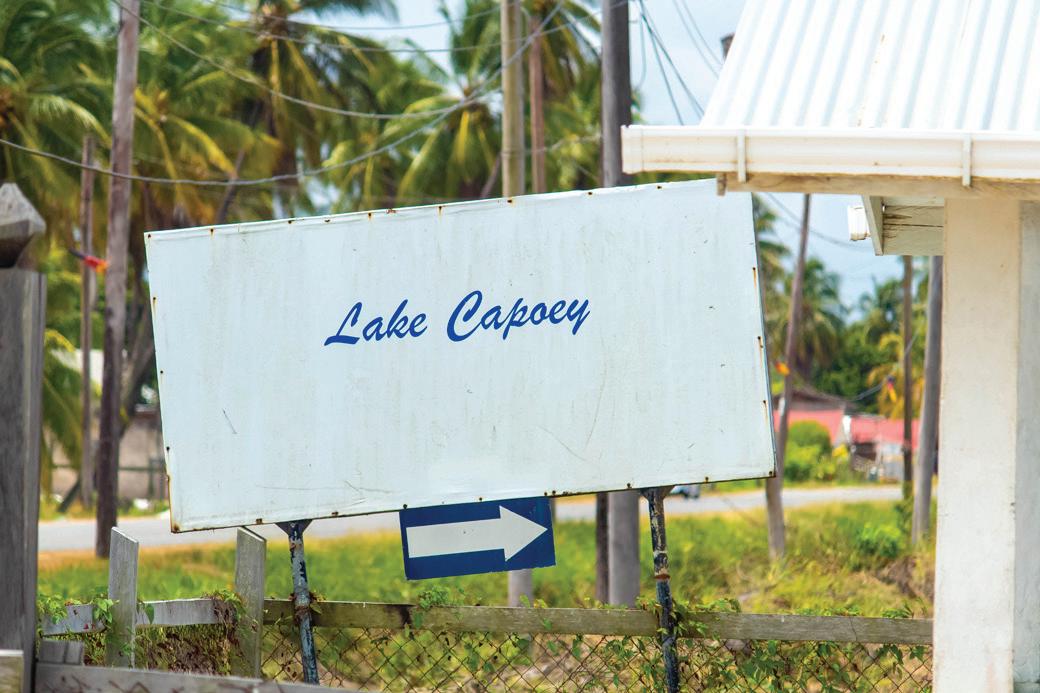

homes, and colour resort guest houses are reflected by the enchanting black water. The speed boat ride into the village takes no more than ten minutes, and is breathtakingly beautiful. Upon reaching the village’s shores, you are struck with the captivating flora, fauna and hot white sand under your feet. The village itself has no roads, but rather paths marked by trees. The village houses two schools, going all the way up to grade six. Capoey is also home to a health centre, library and a bakery run by women. The way of life in Capoey has remained, for many people, largely unchanged.
black water or the white sand beaches, speedboat races and hospitable people,the village of Capoey is beautiful in every sense. But like any other hidden gem, getting there is no walk in the park.

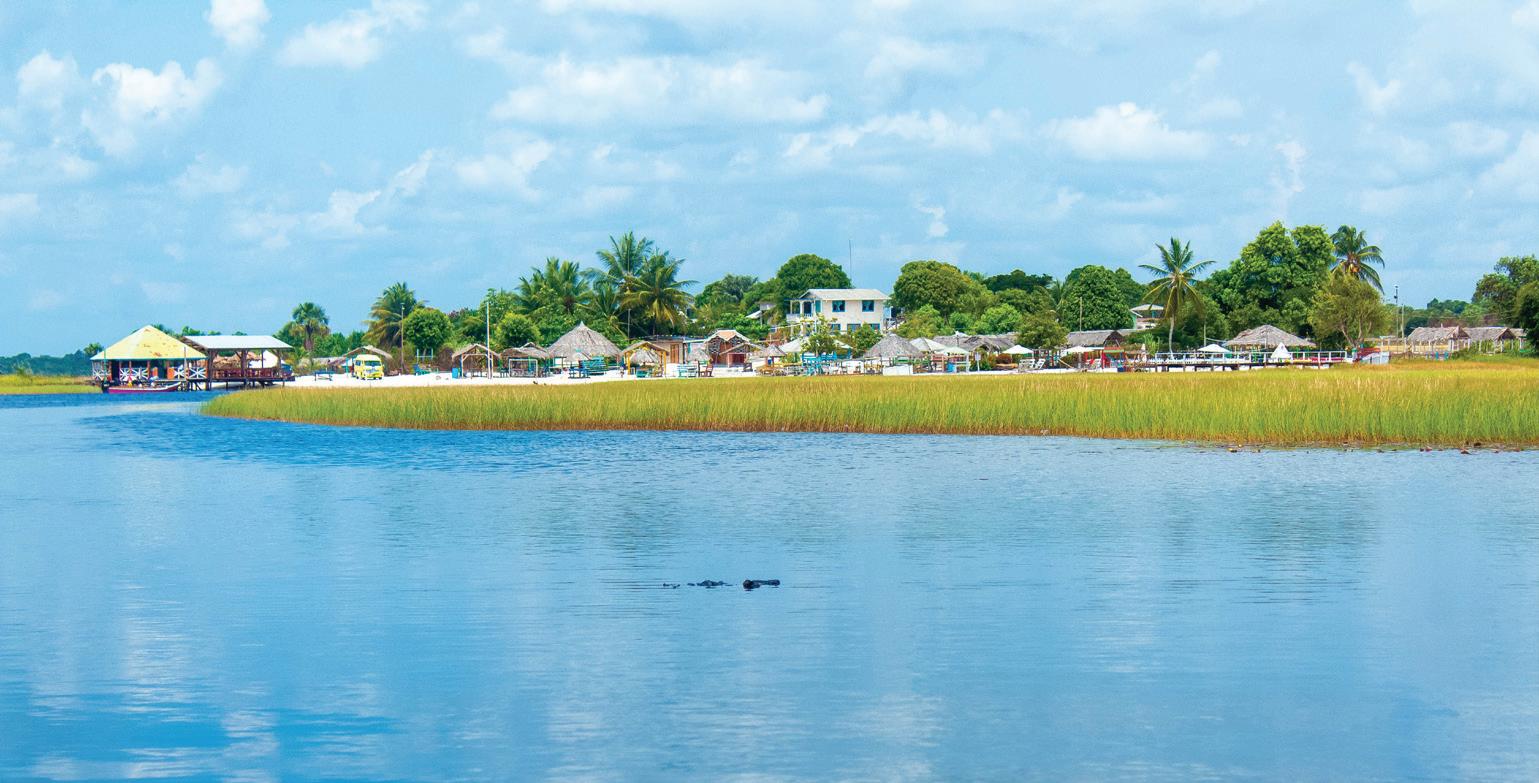
Getting to this little village of the lake from Georgetown is an experience in itself. Capoey is a village and resort located on the Essequibo coast, past Aurora, Maria’s Lodge and the infamous Suddie village. Visitors leaving Georgetown would have to make their way to the Port village of Parika; which is a two-and-a-half-hour drive from Georgetown on a clear day. It is at the point of looking out at the Essequibo River, littered with a host of brightly coloured speed boats and a steady movement of steamers. Getting to Supenaam, which marks the beginning of the Essequibo Coast, takes an hour via speed boats versus the two-hour ride in a streamer. Once on the Coast, it is a straight drive to the access road leading into the village’s stelling. Looking out at Lake Capoey, the village’s little riverside

Godfrey Hendricks was born and raised in Capoey. Godfrey is one of the village’s most notable fishermen and believes that activities like farming, hunting and fishing are necessary to survival and to the village of Capoey. Godfrey, like many of Capoey’s residents, is a Capoey native. Having been born, raised and built a life in the village in the past 58 years. Growing up in Capoey, Godfrey describes like any other authentic country existence. As a child, he learned to swim the lake and was taught as a young boy when was the best time to go out looking for fish.

The knowledge and understanding of the lake and the moon cycles were studied and developed by the original people of Capoey. Although he is also a logger, Godfrey says fishing is what he does when the time and the moon are right. “From school, I left and I was doing Labor’s work, logging. And that’s what I do up until today. And in between, I do the fishing. It depends on the moon,” he said. This relationship with nature is important to the people of Capoey in both the aspects of living and tourism.
When asked why he believes that self-sustaining practices like fishing and farming have survived in Capoey, Godfrey said, “That is really what people here do. We don’t do it on a big scale to get money. We just do it for ourselves.” What is perhaps the most interesting thing about the way of life of the people living in Capoey is that
they still lead a very simple lifestyle. Godfrey stated, “People do the same things, a little farming logging the most in the back dam. The majority is logging.” The authentic existence does not mean that the village’s development is stagnant. On the contrary, Capoey has managed to achieve the task of being a place visited by many while remaining pristine and untouched in its people’s way of living. “Today, we are seeing a difference in how nice Capoey is. In our days, it wasn’t like this. It was just a bush and big trees. Just a little place was the mission.” Godfrey said. Capoey has running water, which, for the most part, has no issues. However, the village does not have electricity but runs on the use of solar lights. Many villagers would like to see their village have readily available electricity. Tourism for a village is a community effort. One in which all of its people must be open and welcoming to the rush of visitors wanting to experience life in Capoey. And if there is anything that Godfrey would like Guyana to know about Capoey, it is that, “I would tell them Capoey is getting really nice. And tourism is carrying Capoey far.”

VI CHRONICLE PEPPERPOT Sunday, September 24, 2023
The village of Capoey
Godfrey Hendricks aboard his fishing boat
The shores of Capoey village
Godfrey Hendricks
This way to beautiful lake Capoey (Shaniece Bamfeild photos)
Capoey

‘Land of the Rising Moon’
By Shaniya Harding
CAPOEY is a Wapishiana word, but Arawaks live in there, and it means land of the rising moon.It is a place known for its black water lakes, welcoming natives and speedboat races. The little village is located along the Essequibo coast, past its neighbouring villages like Aurora, Maria’s lodge, Suddie and Queenstown. Capoey is home to cultural and traditionally rich people who inhabit one bank of the lake. The village is home to almost 700 people, most of which originated from a few farming families. Today, the distinction between the village and the resort is as clear as could be to the people of this beautiful little village. It is said to have been born from a history ofstruggle, faith and a people who kept on fighting to become one of Guyana’s most noteworthy, visited and adored places. Capoey’s future is firmly planted in development, and the village can’t go anywhere but up.

On our quest to find more about the village behind the resort,encapsulated in beauty, the Pepperpot magazine spoke to the village’s long-standing Toshao. Having been born and raised in the village of Capoey, Ralph Hendricks is perhaps one of the longest-serving

Toshaos, having held the post for more than 20 years.
Toshao Hendricks was born into Capoey some 64 years ago when the little village by the lake was still just a mission started by the
stated, “Capoey was not like tis before. In 1988, I was still an acting teacher and at that time someone could have given you the leadership role.” Toshao Hendricks went to describe the day he
was not here. The first mission was at a stelling far away, that was the first mission and it was an Adventist mission,” he said. “Then the methodist came and started this mission here. It was a star apple tree they used to go to school
under.” Today, the school is a beautiful building that comfortably houses all of the village’s children.

The captivatingly majestic beauty of Capoey’s black water lake is central to the village and its sense of
identity. The existence of the river impacts a large part of the village’s history. According to the Toshao, the village of Capoey and surrounding areas were once plantations
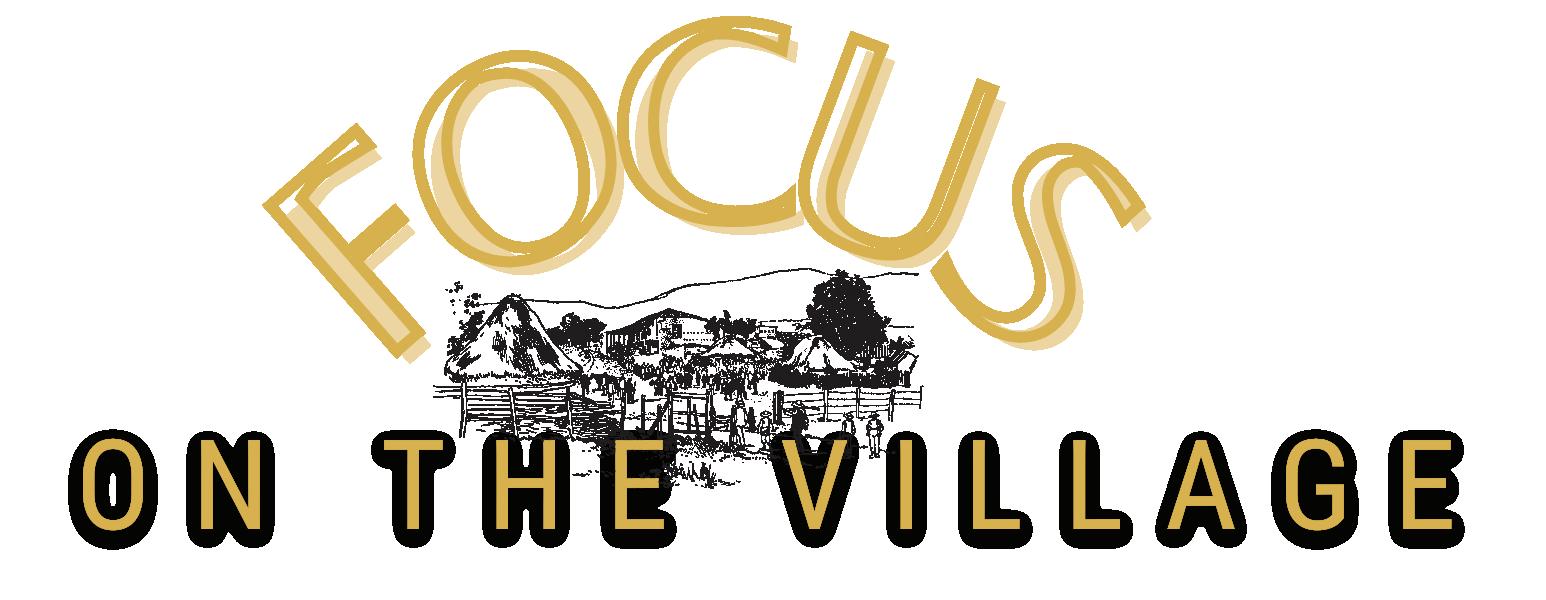
Methodist church. After attending school in Capoey,
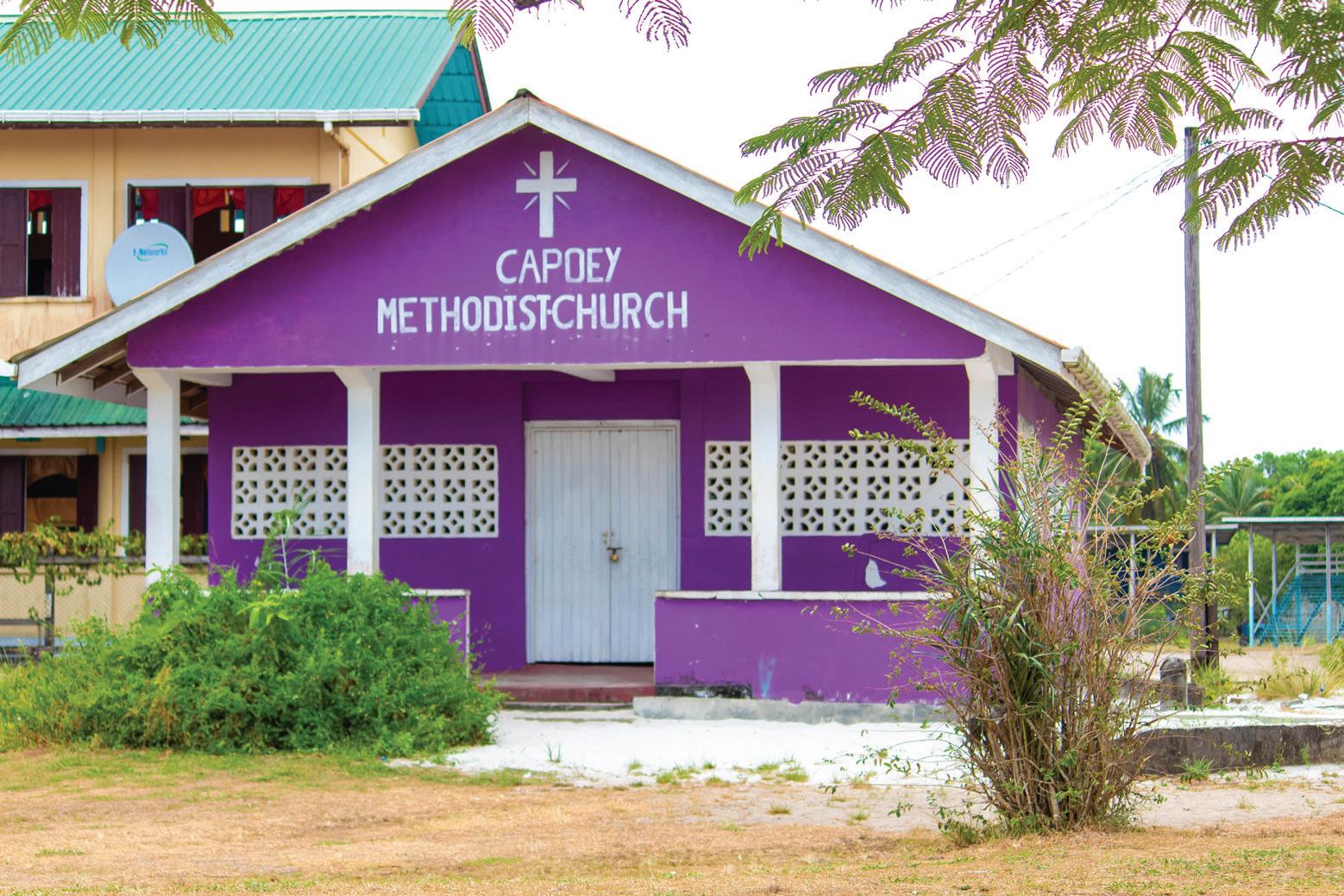
Toshao Hendricks went to high school on a scholarship. Upon his return, the Toshao admitted that he had no initial intention of working in a government job. Like many of the young men of the period, he was interested in the logging aspect of things.
After some time, however, he became a teacher, as he stated, “My mother is the one who took the initiative. My father died at 64 and I was just 15 years old. She took on the job of raising us. I went to school and after some time I became an agricultural science teacher.” He went on to teach for many years before retiring at age 50. As Toshao Hendricks
became the Toshao as he returned from getting married, the former Toshao encountered him. “And I was coming back from church and the Toshao met me with the commander of the region and he said ‘I am old and I am done with this thing, you carry on.’”
Looking at the village of Capoey today, one could never have imagined that it was once a little mission founded by Adventist and later Methodist churches. One of the primary pillars of the community, the school, has changed and evolved with the rest of the community over the years. As the Toshao stated, “It was started by a few families. As a matter of fact the mission
VII CHRONICLE PEPPERPOT ― Sunday, September 24, 2023 SEE PAGE XXIII
Toshao Ralph Hendricks
The Capoey Methodist church showing the church’s influence in the community today.
The Capoey Primary School.
Th Capoey village library
The Capoey sign marking entrance into the village (Shaniece Bamfeild photos)
Education is Capoey’s key to development

Young teacher’s views on how better education could create a better community
 By Shaniya Harding
By Shaniya Harding
IT is said that the children are the future, and it takes a village to raise a child. These sentiments resonate with the people of Capoey, especially people like Melron Hendricks. The shy 30-year-old is one of the community’s teachers and is currently attached to the Cotton Field Secondary school on the coast of Essequibo. Although he teaches outside of his village, the love he has for his community and people is unparalleled, as he stated, “What


I enjoy about Capoey is that it is a tourist destination and its natural beauty would have captured visitors from places other than lake Capoey.”
The people of Capoey, he says, are another aspect of his home that he loves. And also why he believes Capoey is the tourism hotspot that it is. He stated that, “The villagers are very friendly and they tend to be very invitational, meaning that persons that come to Lake Capoey to view the beauty would normally be invited by them. And they would carry them around and

show then what Capoey has. That is what I enjoy about Capoey.”
His passionate pursuit for the development of his people is perhaps owed to the fact that Capoey is embedded in him just as much as he is embedded in it. He said his childhood growing up in the village was unique, with playing the lake and getting carried home on his father’s shoulders. “I really enjoyed playing with my fellow cousins. We made some memories. And to see Capoey from when I was a child to now, I would have
seen mass development, and it has continued, and I know in the future Capoey is going to be one of the most developed communities in Guyana,” he said.Melron went to reminisceabout his early days in the village. His birth was special, as he was among the very few
a teacher was heavily influenced by his father, who was also a teacher, and other mentors in his life who came in the form of teachers and inspired him to guide the next generation. Melron also expressed the importance that good teachers had on
educated today.”
These teachers and their influence on him made him see the importance of the much-needed guidance for the youth of his village, saying, “ I saw that a lot of young people needed to be guided. In Capoey, there
births that happened at home during his time. “I was at home, so I am indeed a man of the soil because I am fully from lake Capoey because I was born at home. I know many persons may have been born at the Suddie hospital but I was different,” he said.
His decision to become
him, saying, “Growing up as a child in Capoey was memorable I would say. Because I started nursery school here and from there I went to Capoey primary school. There the teachers at that time were not trained and they would have worked tremendously with us, sacrificing their time and so on so that we could be
are persons there, but there needs to be more. So, being a teacher would have given me the opportunity to guide these young people from a foundation to carry them career-wise. That is why I wanted to be a teacher and I love my job.”
SEE PAGE IX
VIII CHRONICLE PEPPERPOT Sunday, September 24, 2023
The Capoey play ground
Melron Hendricks (Shaniece Bamfeild photos)
The Capoey nursery school
The children and teachers of Capoey
By Shaniya Harding
THE village of Capoey began with just a few families who had just a few children in the early years. Today the village has over 600 people and sees visitors from all around Guyana.
The community’s children are of particular interest, as many of them have to attend secondary schools outside of the village, in places like Cotton Field, Aurora and Anna Regina. Schooling for the children here is not always the easiest, especially with the travel and the young children who are taken around the village by speedboat. But as hard as the children’s challenges may be, the teachers of Capoey’s school can sympathize, as they face their own challenges along with the children they teach.
Young teachers Thea Roberts and Thalia Allicock are teachers at Capoey’s nursery level. Both women have strong ties in the community. The 24-year-old Thalia Roberts was born in Capoey, and although she


has moved around a few times, she believes that this time around, she will stay in Lake Capoey. “ I was born and raised in Capoey. But I moved around a lot. I used to live in Georgetown and I came back. But I am staying in Capoey. I’m not going anywhere anytime soon,” she said.
Similarly, her colleague and friend, Thea, came to know the village of Capoey through her mother, who is a native of the village. She says that although the move from her home in the Pomeroon to Capoey was difficult. “[Lake Capoey] is peaceful and it is quiet,” she said. Thalia says she became a teacher simply because it was what she’s always wanted to do. As he states, “I like teaching and I like children. So that’s why I joined the profession.”
Similarly for Thalia, she has always had an admiration for careers like teaching and nursing. And when the opportunity presented itself, she became a teacher to help the children of her community. She stated that she enjoyed
her job, and even though it is not always easy, the happy moments spent with her students make it all worthwhile.
One of the challenges facing the pair is the arduous task of getting from the village of Capoey to the teacher’s training college in Anna Regina. Although she is slated to begin teacher’s college in the next upcoming months, Thea says that travelling is a bit of an issue, stating, “I come to the junction and wait to see if I get something to come through the dam. And some teachers still have come over her with the boat.”
Thalia, who has already begun teachers’ college, share similar sentiments and experiences with her colleague. Thalia expressed that, “For me, it’s just me and just me alone. And it overs at around five of six o clock, and by the time I’m at the junction, it’s nighttime. So I have to take a taxi from the centre to come down, and I still have to get a boat. So, it’s a bit challenging and expensive.”
Both Thea and Thalia
teach year two children and Thea says if there is one thing that is needed when working with young ones, it is patience. As she stated, “It requires a lot of patience. Because they don’t listen or do things right away.” Thalia agrees but expressed that for all the moments of repeating herself, there are moments when her students make her smile. As he said, “It is fun sometimes. They make me laugh. But sometimes it is challenging.”
The village of Capoey is working to educate its children to be ready for the new fields and professions Guyana is experiencing. But there isn’t much the teacher can do
if the children aren’t being sent to school. Attendance is a big issue in Capoey’s school system. As Thea stated, “ I think once a student comes to school everyday, they can catch up. But there are students who don’t come everyday and those are the ones who don’t get it because they don’t come everyday.”
Both teachers are working with parents to get them to see the importance of schooling at the nursery level. As Thea explained, many parents may think that nursery school is just something that is not needed. But as she stated, nursery is where the foundation of learning begins, saying that, “This is an
important time. This is where they lay their foundation for learning before going to primary. So, they need a strong foundation at this stage.”
Thalia sees education and its availability as a generational advantage. Both Thalia and Thea believe, as part of the younger generation themselves, that education and knowledge are unbelievable and undoubtedly important. As Thalia correctly emphasized, “Education is important and not because they, the parents, dropped out of school doesn’t mean that their children can’t go and become somebody.”
Education is Capoey’s key to ...
In the past, most of the community’s young people, especially the men took to doing more physical and labour centred jobs, such as logging and mining. This has led to aneglect of school by some villagers if the past and has a profound effect on today’s adults. “Yes, indeed there is a large rate of illiteracy especially with the adults because of not being educated at an earlier time. There were not facilities and they were no opportunities then. These persons would have worked their way through, however they had not the opportunity at that time to be involved in these learning processes. So that is why

FROM PAGE VIII
there is a high rate of illiteracy as it relates to adults,” Melron stated.
But the village is in the process of recovering and improving its literacy level.
As Melron explained, “There are so many opportunities out there we can grasp. However, are still in the process of developing as it relates to education. And over the years I have noticed young people, they would have started taking education seriously, and now we have young professionals. And that is commendable. Recently there has been an increase of children passing the Nation Grade Six Assessment and that shows the development with the
education sector with the past years.”
Education, Melron believes is one of the stepping stones on the path to Capoey’s bright future. “Education is the key to development. Once we are educated it opens our mind, it builds our cognitive abilities and helps us be more decisive. So, when we are educated it paves a way for us to come together once we would have learnt social skills. These factors would bring us together and with our high cognitive abilities we would be able to develop Capoey more,” Melron said.
IX CHRONICLE PEPPERPOT ― Sunday, September 24, 2023
Thea Roberts Thalia Allicock (Shaniece Bamfeild photos)
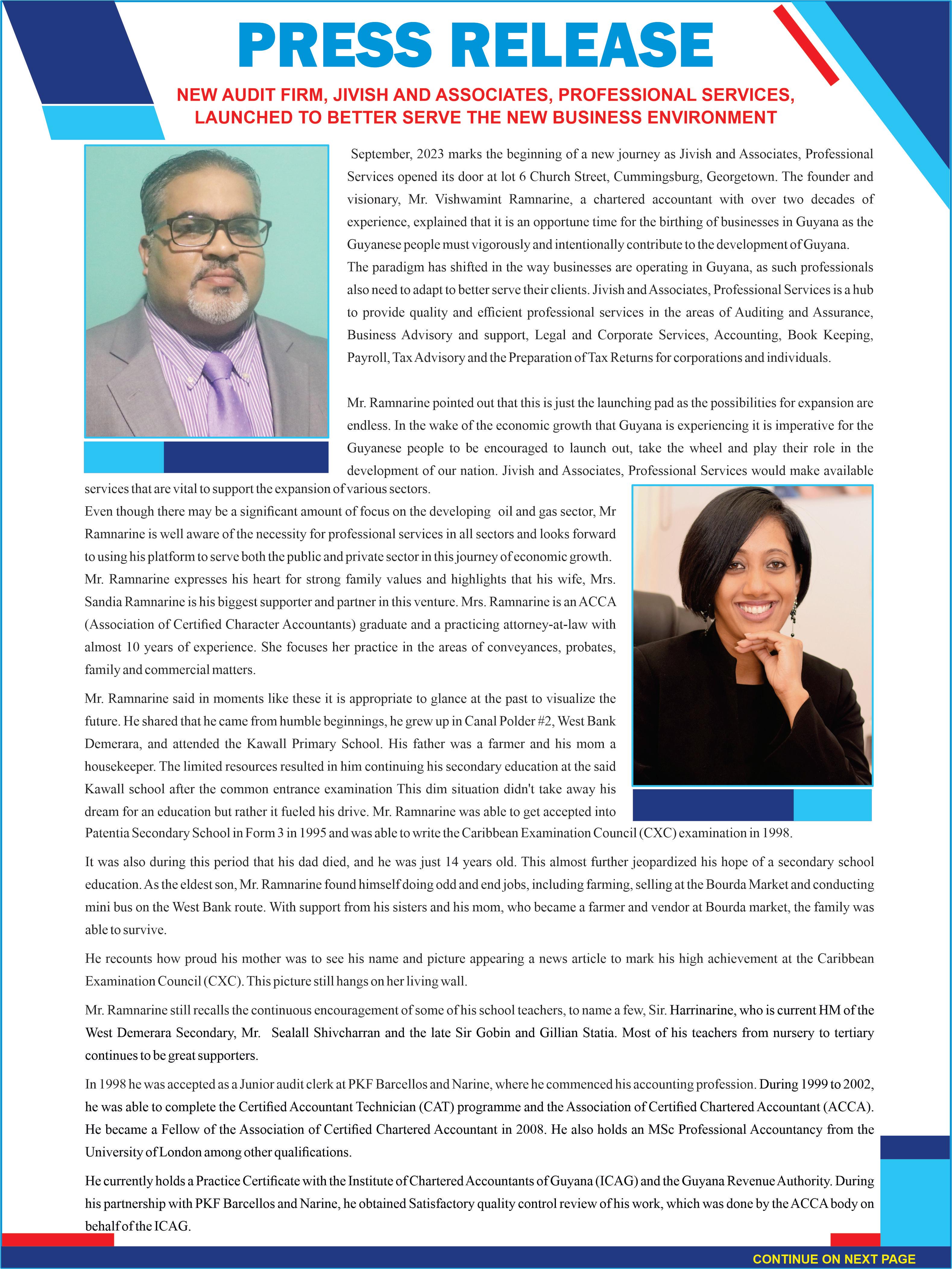
X CHRONICLE PEPPERPOT Sunday, September 24, 2023



XI CHRONICLE PEPPERPOT ― Sunday, September 24, 2023

XII CHRONICLE PEPPERPOT Sunday, September 24, 2023

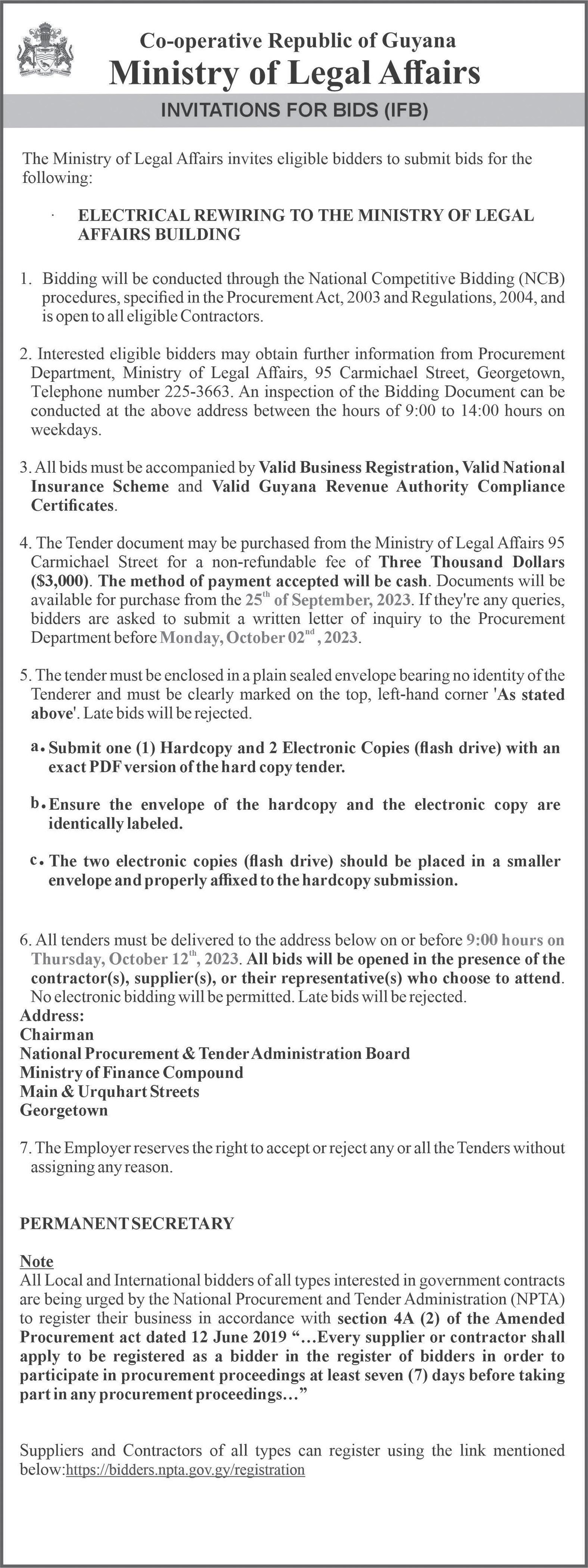

XIII CHRONICLE PEPPERPOT ― Sunday, September 24, 2023
CELEBRATING AMERINDIAN HERITAGE MONTH
SINCE 1995, Amerindian Heritage Month has been commemorated but this year, the celebrations promise to be larger and with more content. This year’s commemoration theme is, “Sustaining our Cultural Heritage and Identity while Contributing to One Guyana”. The month commenced with a cultural event at the National Park, which attracted several thousand people. On show were representatives of each tribe of Amerindians, their languages, food, dance and other facets of their life. Hon. Pauline Sukhai, Minister of Amerindian Affairs and an Amerindian herself, remarked, “Our Indigenous People have for centuries had a deep connection with nature. This connection is rooted in our beliefs, traditional knowledge and practices. You have for centuries been custodians of our environment and its prime protectors.” Hon Gail Texeira, as acting Prime Minister, in her offering, remarked, “Indigenous people of Guyana are an example to the world on how
to manage resources sustainably; this too is your cultural heritage. You have taught us how to survive off the land and how to live in harmony with nature. You have helped to keep our ecosystems intact. This too, is your heritage.”
There are a number of other events planned for the rest of the month, including culture nights, an exhibition at Castellani House and heritage sports meets.

The most important event of the National Toshaos Conference, which opened towards the end of August, dovetailed into Amerindian Heritage Month.
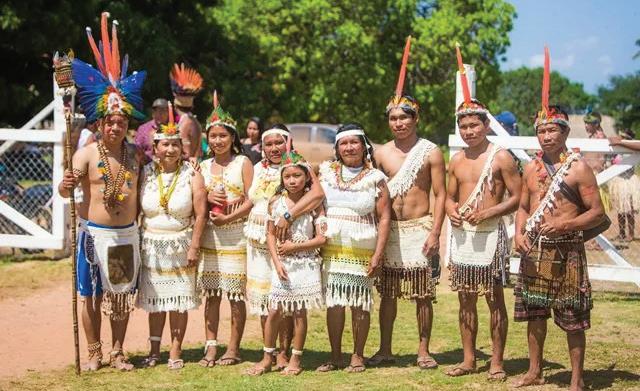


The Conference lasted for five days, took place at the Arthur Chung Conference Centre, and was attended by 200 Indigenous leaders or Toshaos. The forum allowed the Toshaos to meet and interact with Ministers of Government and Government officials and make decisions regarding the development of their communities and the livelihoods of their people. Some immediate interventions were made while plans were discussed for other longer-term interventions.which included upgrading infrastructure in interior communities, improving health care with the building of new hospitals and health centres and expanding services such as telemedicine. Investments would be made in agriculture and tourism and training would be done in these fields to include indigenous youths.
Minister of Finance Dr Ashni Singh and Minister of Culture, Youth and Sports, Charles Ramson made two notable immediate interventions. Minister Singh gave the Toshaos 1,215 tablets so that they could distribute these among their communities so that they could access the Guyana Online Academy of Learning (GOAL) programmes, while Minister Ramson handed over 100 cheques of $1 million each for the upgrades of the community grounds of 100 Amerindian villages.
President Dr Irfaan Ali, in his address on the closing day of the conference, made a number of important undertakings to the Toshaos and these include: The Chairman of the National Toshaos Council (NTC, Mr Derrick John, will meet the Minister of Finance during the Budget Consultation process; the distribution of 30,000 household solar units; an additional $16 billion would be invested this year to upgrade infrastructure in hinterland communities; an aggressive programme to develop education in hinterland communities, including improvements in teachers living quarters and building of new schools; the slow delivery of WiFi to hinterland communities will be addressed; and that every young person with the basic qualifications to enter the nursing programme will be given scholarships to train as nurses and also to train in agriculture and tourism.
XIV CHRONICLE PEPPERPOT Sunday, September 24, 2023
Arawak Girl From branches to roots
ANN MARIE , a young native girl of the Arawak tribe, sat on the bank of the creek looking across the smooth, tranquil waters - in awe as she always does at the magical splendour of the sunset in its burning red and tangerine glow.
The natural beauty and serenity of this place in the interior that she called home lived within her heart; a deep love that in her mind, she gave wings to fly like the magnificent Harpy Eagle. It was a love that soared from the Pakaraimas, over the majestic Kaieteur Falls, across plains and sprawling savannahs and through the lush green forests, home to exotic birds and rare flowers.
From time to time, she had tried visualizing her fore-parents walking 11,000 years ago from Northern Asia, across the Bering Strait during the Ice Age, to this land in the South American continent. A land with black-water creeks, rich vegetation and untouched beauty, waiting to be discovered and peopled.
The different tribes with their tradition and culture, the first to walk this land, had settled until a white explorer laid claim to its discovery. Whenever she heard that story, she wondered, “How can anyone discover a land when it’s already inhabited?”
The riches of the gold and diamonds attracted strange and dangerous men who were desirous to find such, but for her, an Amerindian native, the richness was the land’s splendorous beauty; the cool, fresh air; the gushing streams; the soft, whispering of the wind and sounds of the jungle.
She was adventurous, and the exciting part of her life was to explore and discover places even skilled hunters and trackers knew not; the hidden places where rare flowers, birds and butterflies made their homes,
nature’s secret little hideouts.
It was that adventurous spirit that had helped her find the lost plane. It had crashed in the jungle with a European family on board 8 years ago, and the young white boy whose life she had saved had become her friend. He promised her to return one day, and, true to his words, he did come back years later with a team of archaeologists to film a documentary on the fabled El Dorado - City of Gold.
“I can’t believe,” she had said to herself, in her native tongue, “that after over centuries, they still believe this tale.”
The early explorers had spread tales of a land so rich the streets were paved with gold. Those tales spawned a legend of the lost City of Gold, because it was never discovered, though excerpts from journals written by early explorers pointed to the fact that El Dorado did exist.
David’s team spent two months but found nothing new and El Dorado remained a legend. A special friendship between them since she had saved his life grew into something beautiful as they grew up and before leaving on his last visit, he had given her an engagement ring and promised to come back for her so she could travel the world with him on expeditions.
“Wait for me,” were the last words he had said to her.
Ann Marie twirled the diamond band on her finger and sighed deeply.

David had been back two weeks now, and the Toshao had performed a simple traditional ceremony, joining them in matrimony. Soon it would be time to leave but she was not feeling overjoyed. She knew visiting the Aztec ruins and Mayan dynasties across Central America would be the adventures of a lifetime, but her heart was here; writ
ten on the leaves, carved on the tree trunks, flowing with the gushing streams, the home her ancestors had discovered, their footsteps imprinted on the land. How could she leave?
A distinct barking sound broke into her musing, and she looked up across the water. The otters, their dark glistening heads bobbing in and out of the water, were swimming towards her. They were her aquatic friends, whom she always saw at sunset. She spoke to them in her native tongue as they frolicked, splashing the cold black water all over her. She laughed, and above the din, she heard the sound of a loud screeching and looked up into the sky as a Harpy Eagle, the largest in the world, sailed past to its habitat.
A soft wind blew past, ruffling her long black hair, and tears misted in her eyes, “It’s all here,” she thought, “Our past as a people from a far-off land who came to this rich, green land.”
The sun sank deeper in the west, and she stood up and watched the otters as they swam back up the creek until she could see them no more, and she whispered, “I’ll see you again, one day.”
“Ann Marie!”
She turned at the sound of David’s voice and smiled through her tears.
“I’ll miss home.”
“I know,” he said wiping her tears, “You’re my Indigenous princess, and I don’t want that to ever change, so we won’t stay away too long from your homeland because this is where your heart is.”
He slipped a gold bracelet with tiny intricate carvings on her wrist.
“What is this?” she asked.
“Something inspired by your Mayan ancestors in Guatemala.”
A spark of interest stirred in her eyes, and she knew this journey was going
to take her through many lands her ancestors made their homes, and that one day maybe, she will reach that
point in Northern Asia where it all began, bridging that link to South America that is now home.
A legacy that will live on; a life, a culture to celebrate as Indigenous people.

XV CHRONICLE PEPPERPOT ― Sunday, September 24, 2023
-
Mind-altering experiences and the next generation
PRACTICAL thinking and the truth that envelops it are not what we always process; humans deviate, improvise and construct alternative realities to forget. Reconstructing towards applying false redemption, and, like Adam and Eve, quickly position blame to avoid self-responsibility, thus accomplishing the burial of self-guilt. Parenting, guardianship, or any responsibility that requires the management of other humans, especially young people, requires your observation towards fairplay, so that if a situation occurs that is off-track, it will proceed without challenge, provided that ‘YOU’ are balanced, as in ‘normal’. That evolved in ‘here or there’ that may have suspected half-truths, yet proposing a quick conclusion, implying reasonable plausible effort to bring suspicious closure.
Because of the hope that things will remedy themselves without your participation, if so, then you kneel before the self-deceiving image of the ‘Fallen Angel’, and it will return to haunt and torture. Thus, recognise always that bad things that occur within your area of responsibility should not be left alone and unresolved; there is always some official record to conceal the truth that gets unveiled eventually.
We must understand that until every brick is turned upside down, as the old folks would say, it will most likely not

develop on a truth-based platform, and will grow its own tentacles. Perhaps, it is naïve to think that ‘Fallen Angels’ influence is just based on a metaphor towards error and the struggle of self-adjustment to correct errors. But instead, ‘Fallen Angels’ seem to reside within the construct of our species as a real influence. There is a new scientific title that compels most of us, in the pursuit of freeing oneself from guilt, to willingly transfer that guilt to ‘some other’ with an improvised narrative and the pretence convictions of the hecklers throughout history. This type of guilt can alter your personality to just another: ‘Look the other way, pretend sleeping shepherd’.
This column has before addressed school behaviour, especially male behaviour with respect to females. This

cultural norms we are exposed to, accommodated by critical silence. The chicken is where the symbolic-dismal embodiment of the core experiences are first nurtured these painful experiences that have forcibly intruded, or were adopted, imposed upon, or lured into our lives by peer pressure, or our own week vision of machismo that eventually result in ‘The hatching of the Eggs’ that are the disturbing and offensive ways many of us eventually deal with internal issues; externally, both adults and the young. Male and female. We must conclude that culture and genetics are interweaved in the overall structure of influences. However, it is culture that is in control, inducing and defining the trends that the majority follows. True, some of us who become important people are dangerously wired differently. That is where genetics come
includes those females who were physical enough to punch out with their male counterparts, even though in my areas of growing up, we have witnessed and were told of women who were fighters, and I’m talking street fighters. Yet they were distinguished from how we addressed young girls our age; even the obnoxious ones.
With maleness, even at 12 years old, came a sense of responsibility with respect to the levels of interaction between boys and girls in conflict situations. I was raised in a matriarchal value system. In 1919, two male students were caught on camera assaulting a female; this was a chance to enforce a restoration against past cultural-creed deterioration resulting from multi-sub-cultural influences. But, it was not addressed. Next came the assault of a female teacher, and the example was again missed to establish the public norm that was a necessity. I did a cartoon back then, Sunday 8, Dec. 2019, which is necessary for content to repeat with this article.
I’ve learnt more since 1919. As an illustrator and fiction writer, it is imperative that I get the accepted facts around which symbolic/adventure fiction is developed. I met a trained psychologist some time ago, who encouraged me to explore and understand the symbolism of the ‘Chicken and The Egg’ (this symbolism can be explored on Google). The eggs are the infected content learned through the dysfunctional
in, this is also where the sub-culture of the ‘eggs’ are allowed space, and aggressive disturbing expressions emerge as the new normal. But once defined and recognised, such can be intercepted by social and legal ordinances in a serious, enlightened human cultural system.

Some years ago, I was exposed to the welfare section of the Ministry of Education, and learned that teachers are exposed to information that can play an important part in shaping cultural norms if supported. I’ve worked with teachers and their concerns on more than one occasion to address culturally developed social interceptions that can lead to mental health conditions that can further lead to serious social manifestations, from underage usage of marijuana peddled under the guise of ‘enabling intellect expansion. ’ To a lack of empathy, based on the theft of childhood cultural awareness, which remains a crucial discussion, not yet fully started.
In closing, this is our problem. Our society is also subject to social media. However, we were all children once; we have templates of the past, and the past was not perfect, but today requires a greater effort because it’s a much more transparent world while being deceptive, so our discussion will require much more content, and clearer answers and propositions to create the necessary redeeming balance needed.
XVI CHRONICLE PEPPERPOT Sunday, September 24, 2023

CHRONICLE PEPPERPOT

XVIII CHRONICLE PEPPERPOT Sunday, September 24, 2023

XIX CHRONICLE PEPPERPOT ― Sunday, September 24, 2023

XX CHRONICLE PEPPERPOT Sunday, September 24, 2023
Learning the importance of team building
EVEN though the world seems lonely sometimes, we aren’t truly alone. With seven billion and more people in the world, we’ll always find ourselves in groups, communities and teams. We often find ourselves in group settings, and it’s not our fault. We have to be there as a means of survival or to achieve a specific goal. From one’s place of employment, a class at school or even a structured group such as organisations—we may always find ourselves working with others.
With that in mind, working with others is not a walk in the park. We come from different backgrounds with different belief systems. We all will have a difference of opinion in how things ought to be done. Unfortunately, sometimes people are just randomly put together to work to achieve goals and they’re expected to do just that. It’s more effort than most people would like to believe. Hence, most successful companies and groups

practise team building and understand its importance. It’s a concept discussed in most spaces where people work together, but is it effectively practised?
The standard definition of a team is a group of people working together to achieve a common goal. Teamwork involves defining what that goal is and how you can work collaboratively in a group to achieve such. Team building is the method or practice used to ensure that a team works together effectively without much conflict or tension. Team building comes in many forms and can be used to evoke different outcomes. A cohesive team doesn’t automatically create itself. With that in mind, the responsibility lies with the team leader to ensure team building is practised based on the needs of the group.
Team building activities are usually centered around four key areas: communication-focused, trust-building, problem-solving, and decision-making. To accomplish the goals set out, the team ought to have a sense of responsibility and focus to do so. The team members should also set clear guidelines on how they want to achieve said goals. Effective communication is perhaps one of the most important aspects of team building because there will be no progress without it.

At the end of the day, the team leaders’ proposed team-building approaches should be practical to the dynamics of the group in question. We simply can’t afford to accomplish certain goals without the help of others and I hope we don’t shy away from the idea of such. Instead, we should work on our weaknesses in teams while highlighting our strengths. No man is an island and the least we can do is enhance our abilities to work together to achieve the common goals at hand.

XXI CHRONICLE PEPPERPOT ― Sunday, September 24, 2023
Learning Spanish
PRESIDENT Dr. Irfaan Ali, at the opening of the Good Hope Secondary School recently, said one of his regrets was that he didn’t seriously learn Spanish while in high school. And it was at that event he announced that his government would be making Spanish compulsory in schools. Little
did I, or anyone else for that matter, know the President meant that Spanish would become mandatory in schools in a matter of weeks. However, we are seeing schools and the Ministry of Education working out the kinks to make this happen.
More recently, there has been much conversation about Guyana’s plans to seemingly mainstream Spanish, with the Guyana Police Force printing “policia” (the Spanish word for Police) on force vehicles. President Ali also told the latest batch of Guyana Defence Force recruits early this month, that they are required to learn Spanish within their first year of service.

I’m not exactly sure what exactly will be done to help more people learn Spanish, but I will say I think this is a good move. I also regret not seriously learning Spanish in school.

I studied Spanish and French until fifth form, and when I sat the Caribbean Secondary Education Certificate (CSEC) Examinations in 2016, I wrote Spanish. Honestly, I wasn’t serious about the subject, so my Grade Two pass did not surprise me. When I went into sixth form, I practically forgot everything I learnt, but it didn’t bother me too much because it wasn’t like I was doing Spanish at the Caribbean Advanced Proficiency Examinations (CAPE) level.
It wasn’t long before I started wishing I was more serious about learning the language in school.
In 2017/2018, I began volunteering with a local non-governmental organisation that focused on providing support to Venezuelan migrants in Guyana. I was good at packing boxes and snapping photographs, but the language barrier was significant. My conversations were extremely limited, and I depended on a bilingual friend to help me communicate with some of the migrants we were trying to help. Around that time, I did a story on Guyana’s changing business landscape with the influx of Cubans at the time. Then, it wasn’t uncommon for stores to seek bilingual salesgirls and porters, and I even interviewed some of the Cubans busy shopping on Regent Street (but with the help of a friend who is a secondary school Spanish teacher). I wished I could speak Spanish then.

Last year, when I attended the IX Summit of the Americas in Los Angeles, I felt as though I was missing out a lot. The Summit took place in the city with the largest Hispanic/ Latino community in the United States, and I stayed in an area where conversing in English was hard. If that wasn’t eye-opening enough for me, the first official event I attended featured the US Assistant Secretary of State, Mr. Brian Nichols. At the end of that event, journalists approached him with questions, and they all spoke in Spanish. Mr. Nichols also replied in Spanish, and there I was, clueless about what they were saying until a friend could translate for me. This year, I travelled to India with journalists from Latin America and the Caribbean, and again, I barely had a clue what my Latin American colleagues were talking about half of the time- even though, I will admit, many of them were kind enough to speak slowly and translate for me. Suddenly, telling overseas colleagues that I am from the only English-speaking country in South America didn’t feel like much of a boast.
So, since then, I have been trying to learn the language. I downloaded Duolingo, an app that helps you learn foreign languages, hoping it would help me (currently, I’m on a 230day streak and my progress is extremely slow). I continue to encounter people who speak Spanish, and my inability to SEE PAGE XXIII
XXII CHRONICLE PEPPERPOT Sunday, September 24, 2023
Capoey...
FROM PAGE VII
and home to slaves, and it was these slaves that gave the village its name. “Here was once a plantation. When the water dries every twenty years, but its years that it hasn’t dried,” said the Toshao. The lake in previous years, would go through an extreme dry period every 20 years, where the lake bed would be dry enough to walk over. During one of these dry spells, the village was formed as escaped slaves found a new home. As the Toshao stated, “We were once slaves, and they decided to escape during the night. And when they reached here, in this river bank the moon started to rise over the bushes. And they said, “Capoey, land of the rising sun.”
Today, the community has blossomed into a tourist’s destination and an adventurer’s dream. And this year, on September 24 will celebrate Heritage Month like many other indigenous villages, celebrating what it means to be Guyana’s first people. Toshao Hendricks stated that it is a tourist’s destination and an adventurer ‘s dream. “Heritage is the day when we all celebrate. We have labba, bush cow, bush hog and any other meat and fish you can have that day. We have cassava bread; we will have crab in different dishes. And many more activities that day”

The Toshao admitted that this would most likely be his last year in service, as he stated, “This is my last term as Toshao and I think I have had enough. I think the younger persons should take up the opportunity to continue from where I left off.” In all his years of service to the community of Capoey, Toshao stated that if there’s one thing, he could say about his village, it is moving forward. He stated that, “I can tell the rest of Guyana that we are developing slowly but surely.”
Learning Spanish ...
FROM PAGE XXII
speak the language makes it hard for us to communicate effectively. Two weeks ago, I travelled to Region One to report on a conservation-focused story; again, many people spoke Spanish. I also want to go backpacking across South America someday (soon) so I figure I should really embrace the language.
For what it’s worth, I think getting more people to learn Spanish or any foreign language, is a good thing. However, I don’t believe it is an easy undertaking. We will have to spend quite a bit of time figuring out how exactly all of our learners can be exposed to the language and how we help grown folks, like myself, learn it effectively. Maybe this venture demands more specialised teachers or support from bilateral partners until we are capable on our own. I hope those with much more authority than me figure all of this out because, like I said, I think it is a good thing.

If you would like to connect with me to discuss this column or any of my previous work, please email me at vish14ragobeer@gmail.com

XXIII CHRONICLE PEPPERPOT ― Sunday, September 24, 2023
The view of Capoey’s Resort
7 Spheres of Wealth Part II
THANK you for the positive feedback from last week’s column and I am happy to know the content added value to lives. Today, we will dive into the remaining four. I give God thanks for brilliant minds like the late Dr Myles Munroe. I desire to leave a legacy as powerful as his that, after my death, I must still be able to transform lives.
Social Wealth is the fourth. We don’t think about this sometimes, but is it important to us to become wealthy in our

friendship, wealthy in family relationships, wealthy in our relation with people. We are as poor as the friends we have and as wealthy as the friends you keep.
“If your marriage is not working well and your relationship with your parent is negative, unforgiveness and anger, you are poor in your social wealth,” said Myles Munroe
Forgiveness can be difficult for most people, but it is healthy to forgive. Although I am a forgiving person, it took me a while
to forgive my dad for abusing my mom and deserting us. It is wise to be nice to everyone because your success may depend on someone you don’t like. Sometimes, you don’t need money but need people who have money. While in prison, Joseph developed relationships and one of the friends he made connected him to Pharoah. We all know the story that brought Joseph to the prime ministership.
Over the years, I have developed relationships that continue to assist me on my journey. When I had planned my 14-city US tour for my books, people wondered how that was possible. And I don’t live there, but I have cultivated and nurtured some incredible relationships. I could not have planned and executed Guyana Fashion Week, Women in Business Expo and many other projects in Guyana and across borders. I admired Dolly Chambers and her beautiful people friend (pic inserted ) because of the way they were related to each other at the indigenous brunch hosted at Tower Suites. I thought they were related but one of them told me they were friends. Christine King and some of her friends from school days will join us. One of them was dancing to the indigenous music and I was thinking when I get to that age, I need to be dancing like that. Genuine friendship contributes positively to our well-being.


Influential Wealth
We must be rich in the area of influence. God wants us to be wealthy in our capacity to bring change to the world. What kind of influence do
XXIV CHRONICLE PEPPERPOT Sunday, September 24, 2023
SEE PAGE XXV
7 Spheres of Wealth...
FROM PAGE XXIV
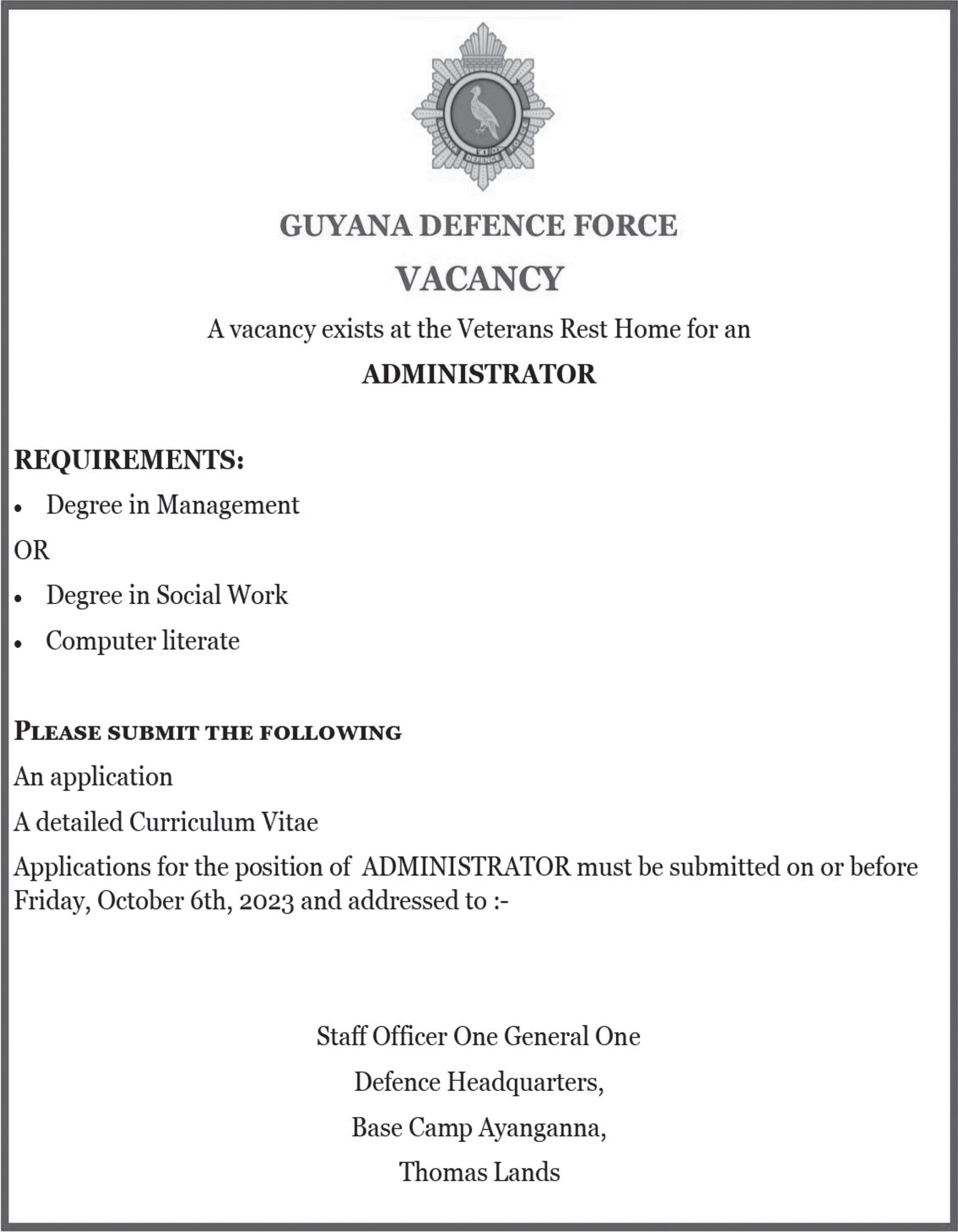
you have in your family, community, or church?
Myles Munroe made reference to John 16:23: “ I say unto you, Whatsoever ye shall ask the Father in my name, he will give it to you”. In other words, Jesus is using my name and my father will give everything you need.
Dr Monroe asked, “is your name good? Have you protected your name.” He said in his home country his children could have walked into any bank and received a loan because of his influence and good name. My daughters have told me stories of positive reactions from people because of my influence.
This points to the importance of the relationship itself for the ability to influence. Establishing trust, says noted social psychologist Robert Cialdini, seems a precondition for the ease of influence. To change someone’s mind, it helps to first build a connection where they will be more open to hearing what you have to say.
Community Wealth

We must be wealthy in our community experience hence improving other people’s lives. If we help others to get what they want we will develop Wealth in the community. Dr Munroe said “When you help the drug addict, the poor, people who are abandoned, those who can’t help themselves. If you reach out to them, you are becoming wealthy”
Those words reminded me that my family is more wealthy than we realised because we have been doing this for years. I grew up in a home to always find a way to help others even with the little they had. The philanthropic work I do results from the environment I grew up in, so it is natural for me to do the things I do. Dr Munroe reminded us that our community influence will be reflected in our obituary and you will not be remembered for what you save but for what you give. That reminded me of the great things people said when my foster dad Allan Join died. A few weeks ago, I was at an event and it was done by 11pm and some finger foods were left over. I asked the host of the party permission to put them in boxes and take them to Regent Street with a beverage. I was excited when I got permission, and I called to take it. The taxi driver was telling me how dangerous it is at this time with street people. I explained that this was not my first time and we will be fine. I went on to tell him about a few of the products I have done, including the Bread Basket which continues to provide meals for the homeless.
I think he was inspired by the time we got to the destination because he assisted in sharing. Most of them know me very well because I don’t only give them food, but I also interact with them sometimes. Some even say I make the best coffee lol. The event was significant but the high point for me was this exercise which showed hungry faces converted into happy faces. These pics are stored on my mental hard drive because I don’t take any pics.
The final is Generational Wealth!
‘A good man leaves an inheritance for his children and his children’s children.” Proverbs 23:13

This is the most important, according to Myles Munroe. Focus on becoming wealthy in the area of generation, just as the scripture says. We must leave an inheritance for our grandchildren.
“If everything dies with you, you are a failure. You are a failure. In the kingdom of God, you must think generational. Leave your children assets, not deficits; blessings, not curses.
Dr Myles Munroe
I trust this content inspires you not to let everything die with you and that you are capable of doing more than we are as we continue to celebrate life BEYOND THE RUNWAY.
XXV CHRONICLE PEPPERPOT ― Sunday, September 24, 2023
Myths and facts on mental health
I thought it important today to dispel the most common myths about mental health illnesses as their negative impact is greatly underestimated.
Myths are based on old-fashioned thinking, outdated assumptions, and a lack of education and awareness. They create and sustain stigma and discrimination; they prevent people from seeking support.
Just a quick reminder: a mental health illness is abnormalities in our thoughts, feelings and behaviours.
Not very long ago, people with mental health issues were shunned by society and viewed to be feared. Honestly, I’m not sure much of this has changed.
The first beneficial action may be to look internally. Have you ever stopped to think about your first thought when you meet someone with a mental health issue or simply hear about someone’s struggles? Do you view them differently? Judge or fear them? Or, are you equipped to healthily deal with that situation?
Let’s hope you may be from now on as we dispel some of these misunderstandings and stereotypes.
1. Myth: Mental health illnesses are uncommon
Fact: The World Health Organization has determined that one in four individuals have a mental health disorder. Yes, that means that if you are in a room with just three persons, at least one of you has or will have a mental health issue. If that’s not common, I don’t know what is. This myth stems from a lack of open, honest, public discussions about these issues.
2. Myth: Only certain types of people can have mental health illnesses

Fact: Mental Health Illnesses do not discriminate based on anything and the risk factors are just as common as the illnesses themselves. These include family history, trauma, major life
stresses; the list goes on and no one is immune regardless of age, sex, race, socio-economic status, culture, education level, or lifestyle. People believe that if there is a conventionally good life - one with support systems and wealth - that one would automatically be happy and healthy but that’s not how it works. This belief is also obstructive as it may stop people from recognising early warning signs in someone at risk and force people to believe their symptoms are unwarranted and therefore, embarrassed to seek help.
3. Myth: If a person has a mental health condition, it means the person is weak or has low intelligence or low emotional intelligence
Fact: Once again, mental illness, like physical illness, can affect anyone. A mental health condition has nothing to do with weakness, strength or lack of willpower. It is not a condition people choose to have or not have. On the contrary, the self-awareness it takes to recognise a problem and act on it requires more strength and courage than anyone can imagine. Mental health disorders are illnesses, not signs of poor character and should be met with the same support you show anyone with physical ailments.
4. Myth: Children or teenagers cannot have mental health issues
Fact: According to the Substance Abuse and Mental Health Services Administration (SAMSHA), half of all mental health disorders show first signs before age 14 and three-quarters of mental health disorders begin before age 24.
This is due to the commonality of the risk factors to which even children are not immune. I cannot tell you the number of times I have heard “No, they just spoilt” when a child has been really suffering. If this belief continues, children won’t receive the help they need and early recognition and support can prevent many developmental

issues, which often lead to challenges in the future.
5. Myth: People with mental health problems can’t function regularly in society
Fact: The contrary is actually way more common. There are so many people who function well and go unnoticed than those who do. Even if one is diagnosed with a mental health illness, with the right treatment, he or she can lead productive, social and successful lives both personally and professionally.
6. Myth: Certain mental health illnesses are based on characteristic traits
Fact: Mental Health Issues are not based on character flaw or characteristic attributes.
Each illness has their own stigma when it comes to this myth but two easy examples are “Addiction is just a lack of willpower” or “eating disorders only occur in women.”
Addiction has many risk factors - a major one including family history. Actually, research show that recovery is not more likely due to willpower but rather the development of healthy coping skills which are supported by loved ones and community.
In regards to eating disorders, SAMSHA found that men with eating disorders have been increasing in prevalence every year and account for 25% of eating disorders.
7. Myth: People with mental health problems are scary or dangerous
Fact: Research shows that those with mental health issues are more likely to be subjected to abuse – of any kind- than the average person.
This myth is based on, once again, stereotypes, un-education, and ill-informed media. If we do not change this belief, it creates additional issues for people who are already experiencing challenges and puts affected individuals at an increased risk of danger or violence from others who believe they
XXVI CHRONICLE PEPPERPOT Sunday, September 24, 2023
SEE PAGE XXVII
Myths and facts on ...
FROM PAGE XXVI
should be on the offence –which contradicts the myth in itself.
8. Myth: Talking about mental health problems makes them worse
Fact: Many people dislike having the difficult, open conversation- whether it’s asking or admitting. However, research shows that speaking out is always the better choice. This myth comes from fear of the unknown but the more you talk and know, the less fear there will be.
You cannot speak a mental health illness into existence just like silence doesn’t make one go away. Always try to speak positively, accurately and safely about mental health illnesses. Educate yourself before you begin these conversations, as the opposite can inadvertently perpetuate stigma about mental health that prevents people from getting help. You do not have to be a professional to learn the basic do’s and don’ts of an initial conversation to normalise mental health problems.
9. Myth: All mental health issues are treated the same Fact: Although most mental health issues have different symptoms, they cannot be treated the same. Treatment for anything is never a one-size-fits-all.
Based on so many things such as symptoms, severity, duration, personal and family history, there are many treatment options such as counselling, lifestyle changes, medication or a combination.
10. Myth: Only mental health professionals have a role to play in treatment
This myth assumes that mental illness is so complex and challenging that care should be left only to the professionals. While it is true that professional support is vital for a person’s diagnosis and treatment, a support system made up of family, friends and community are equally important. If this myth prevails, multiple pathways to adequate care and support will be diminished, the affected individual will believe they need to seek professional help but do not share with loved ones and there is no accountability and responsibility for the community to take any action in the fight against our own who are silently struggling.

11. Myth: People with strong support networks don’t need therapy. Fact: While a good support system is vital for recovery and maintenance, never underestimate the power of a good therapist, which can guarantee a different level of support, including skilled conversations and techniques, objectivity and confidentiality.
12. Myth: I can do nothing to help someone with a mental health problem
Fact: There are many things one can do if someone is suffering around them. Firstly, education yourself and have discussions to show that you understand rather than judge or fear. Learn about resources around to help and share that information; accompany them to these sessions for support. Treat them with love and respect to remind them of their worthiness. You can not give up on them when they need you the most.
Additionally, the sad truth is that most people still do not reach out for help, so you are all they feel they have now.
13. Myth: Mental health care, such as seeing a psychologist, is only for people with severe issues
Fact: Anyone can and should see a mental health professional. It can be a great preventative tool in ensure that any current issues do not spiral out of control.
14. Myth: Mental health problems are permanent
While it is true that majority of mental health issues are treatable and not curable, the negative symptoms do not have to be permanent in your life. This myth also excludes different experiences such as short- term episodes brought on by stress.
Even for the healthiest individuals, mental health doesn’t stay the same as many factors influence us throughout life. When situations change, our mental health can change, however temporary. So, a good preventative and maintenance treatment plan will ensure a healthy and satisfying life. Changing attitudes and behaviours takes time, and is difficult for everyone. However, you can take the first steps by sharing this as far and as wide as you can to clear up any misconceptions and eliminate any stigmas around mental health to ensure more people seek treatment and receive the care they need.
Thank you for taking the time.
XXVII CHRONICLE PEPPERPOT ― Sunday, September 24, 2023



XXVIII CHRONICLE PEPPERPOT Sunday, September 24, 2023




XXIX CHRONICLE PEPPERPOT ― Sunday, September 24, 2023




XXX CHRONICLE PEPPERPOT Sunday, September 24, 2023


XXXI CHRONICLE PEPPERPOT ― Sunday, September 24, 2023


XXXII CHRONICLE PEPPERPOT Sunday, September 24, 2023

XXXIII CHRONICLE PEPPERPOT ― Sunday, September 24, 2023
THOUGHT FOR TODAY
Children begin by loving their parents; after a time they judge them; rarely, if ever, do they forgive them.
September 24, 2023
STUDY SUCCESS
Dear Student,
Welcome dear friend. Being better at reading also includes comparing things to explain how they are alike or contrasting things
to explain how they are different. Your developed reading skills and strategies may even enable you to freely formulate probing questions to compare and contrast characters and texts to help you establish their qualities. With practice you may also master comparing original texts to summaries to understand the advantages and limitations of summaries. Be wise.

Love you.
THE PASSAGE
Answering questions from a short story
After you read the passage go ahead to answer the questions that follow. But before you start, here are repeats of some definitions:
1) A metaphor is a comparison between two unlike things with the intent of giving added meaning to one of them. It is one of the most important forms of figurative language, e.g., “Life is a valley of tears.” Unlike the simile, the metaphor does not use a connective word such as ‘like,’ ‘as,’ ‘than,’ or ‘resemble’ to state a comparison.
2) Climax is the point of greatest emotional intensity, interest, or suspense in a narrative. Drama calls it ‘crisis or turning point.’

3) Conflict is a struggle between opposing forces or characters in a short story, novel, play, or narrative poem.
Conflict can be external or internal and it can take one of these forms: (i) a person against another person; (ii) a person against society; (iii) a person against nature; (iv) two elements or ideas struggling for mastery within a person. Now read the passage.
Striking through the thought of his dear ones was sound which he could neither ignore nor understand, a sharp, distinct, metallic percussion like the stroke of a blacksmith’s hammer upon the anvil; it had the same ringing quality. He wondered what it was and whether immeasurably distant or nearby – it seemed both. Its recurrence was regular, but as slow as the tolling of a death knell.
He awaited each new stroke with impatience and – he knew not why – apprehension. The intervals of silence grew progressively longer; the delays became maddening. With their greater infrequency the sounds increased in strength and sharpness. They hurt his ear like the thrust of a knife; he feared he would shriek. What he heard was the ticking of his watch.
1. The mood of the passage can best be described as
(A) lighthearted (B) somber
(C) unsettling (D) humorous
2. Which of the following best describes the author’s purpose in this passage?
(A) to describe the character in detail
(B) to demonstrate an extended metaphor
(C) to provide resolution to a character’s conflict
(D) to create the illusion that time is slowing down
3. Based on the passage, which of the following do you think is least likely to occur next?
(A) The protagonist will speak.
(B) The author will continue to recount the protagonist’s thoughts.
(C) The protagonist will provide an accurate account of reality.
(D) The author will introduce a new event.
4. Which of the following best describes the conflict in the passage?
(A) the growing distance between perception and reality
(B) the intimidation of one character by another (C) one character’s heightened awareness of danger
(D) one character’s inability to make observations
5. The increasing tension and anxiety suggest that this passage is part of the story’s
(A) resolution (B) climax
(C) falling action (D) exposition
6. Which of the following phrases contributes least to the author’s description of time?
(A) “sharp, distinct, metallic percussion”
(B) “tolling of a death knell”
(C) “stroke of a blacksmith’s hammer”
(D) “the thrust of a knife”
IMPROVING READING
Compare and contrast
Read the passage. Then answer the questions. Diana and Yvonne are twin sisters who look exactly alike, but they are not exactly alike in every way. Diana loves to be outside riding her bike or playing soccer, while Yvonne would rather be inside reading a book or watching a movie. Both sisters enjoy cooking, but Diana’s favourite meal is spaghetti, and Yvonne prefers tacos.
1. According to the passage, Diana and Yvonne
(A) think the same way.
(B) are on the same soccer team.
(C) look exactly alike.
(D) have the same teachers.
2. Which is an incorrect statement?
(A) Diana likes to ride her bike.
(B) Diana’s favourite meal is tacos.
(C) Diana is Yvonne’s sister.
(D) Diana likes to be outside.
3. What question helps you contrast Diana and Yvonne?
(A) What is their last name?
(B) Where do they go to school?
(C) What do they like to do?
(D) How old are they?
4. The first sentence indicates that the passage will
(A) compare the twins.
(B) define and explain the twins.
(C) compare and contrast the twins.
(D) explain the twins.
XXXIV CHRONICLE PEPPERPOT Sunday, September 24, 2023
OSCAR WILDE (1854-1900) Oscar Wilde – Forbes Quote
Check for oral
THERE are three broad groups of agents proven to cause cancer of the mouth, namely physical, chemical and viral. But exposure to these agents (called carcinogens), does not necessarily result in the development of a tumour because several genetic (familial), dietary, hormonal and sex-related factors are known to modulate the process.
It is said that over 2,500 persons die of cancer daily. Many cancer victims exhibit the disease in the head and neck regions, and alert dentists are frequently the first to detect the condition. But this should not be the case. The patients themselves should be the first to note the incipient tumour.
One needs to know certain important points about general and oral cancer in particular. This is especially so since despite not there being a cure for it, prevention is obviously crucial. In addition, appropriate measures taken when the growth is ensconced will go a long way in mitigating the result. The following notes will epitomize the disease.
Cancer usually attacks persons above 40 years old. Almost every cancer that affects the mouth starts as a surface lesion. This means that it can be seen right away. Twice as many men as women get mouth cancer, and it takes about five years to develop to the killing stage. At that point in time, around half the victims die.
The two most common areas in the mouth that acquire cancer are the sides and upper surface of the tongue. For some reason, the gums seldom get affected.

Although the exact cause of oral cancer remains unknown, tobacco and alcohol have been proven to be the most important contributing factors. Over 30 carcinogens exist in cigarette and marijuana smoke. In one study, 97 percent of the victims with oral cancer smoked. The risk is reduced when the cigarette carries a filter. But it increases greatly with alcohol abuse. In other words, the combined habits of smoking and drinking alcohol increase the cancer risk dramatically.
Chronic mechanical irritation to the oral tissues due to sharp parts of dentures, irregular or sharp teeth or fillings, food burns ( hot coffee), spicy food, poor oral hygiene and many of other physical agents have been implicated as possible factors in susceptible people as a cause of mouth cancer.

About 25 signs and symptoms indicate the beginning of a cancerous lesion. In general, any change in appearance or sensation not previously experienced or detected should be examined by a duly qualified professional. Sometimes, symptoms include bleeding, swellings, a crust on the lip, a rough spot, pain, taste changes, numbness, chronic cough, hoarseness and dry mouth. Signs may include a red patch, chronic ulcers or bluish/brownish-black lesions. Remember it is better to suspect any abnormality than not to. Take nothing for granted. The stakes are too high.

XXXV CHRONICLE PEPPERPOT ― Sunday, September 24, 2023

XXXVI CHRONICLE PEPPERPOT Sunday, September 24, 2023












 By Dillon Goring
By Dillon Goring

















































































